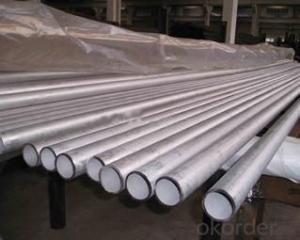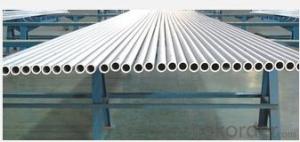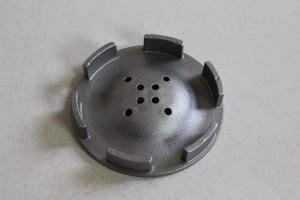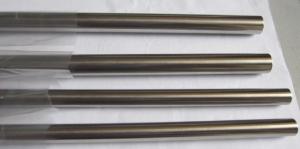Stainless Steel Tubes
Stainless Steel Tubes Related Searches
Best Paint For Stainless Steel Blanket Insulation For Steel Buildings Primer For Galvanized Steel Foam Filter For Stainless Steel H S Code For Stainless Steel Surface Grinding Wheels For Stainless Steel Surface Grinding Wheels For Hardened Steel Hole Saw For Stainless Steel Paint For Stainless Steel Stainless Steel For BbqHot Searches
Steel Mesh Panels For Sale Price For Stainless Steel Scrap Scrap Price For Stainless Steel Price For Stainless Steel Stainless Steel Tank For Sale Stainless Steel Sheets For Sale Cheap High Tea Sets For Sale Stainless Steel Tanks For Sale Stainless Steel For Sale High Density Fiberboard For Sale Solar Hot Water Collectors For Sale Scaffolding For Sale In Uae Scaffolding For Sale In Ireland Scaffolding For Sale In Houston Type Of Inverter For Solar Price Of Shipping Containers For Sale Types Of Inverter For Solar Stock Price For Aluminum Used Solar Inverter For Sale Steel Mesh Panels For SaleStainless Steel Tubes Supplier & Manufacturer from China
Okorder.com is a professional Stainless Steel Tubes supplier & manufacturer, offers integrated one-stop services including real-time quoting and online cargo tracking. We are funded by CNBM Group, a Fortune 500 enterprise and the largest Stainless Steel Tubes firm in China.Hot Products
FAQ
- Yes, stainless steel pipes can be used for wastewater applications. Stainless steel is highly resistant to corrosion and can withstand the harsh chemicals and contaminants present in wastewater. It is also durable and has a long lifespan, making it a reliable choice for wastewater systems.
- There are several different types of stainless steel pipe elbows, each designed for specific applications and requirements. Some of the common types include: 1. 90-degree elbow: This type of elbow is the most commonly used and is designed to change the direction of the pipe by 90 degrees. It is available in different sizes and materials to suit various needs. 2. 45-degree elbow: Similar to the 90-degree elbow, the 45-degree elbow is used to change the pipe direction but at a smaller angle of 45 degrees. It is often used in situations where a sharper change in direction is required. 3. Long radius elbow: This type of elbow has a larger radius, resulting in a smoother flow of fluids. It is commonly used in applications where the flow rate is critical, such as in the oil and gas industry. 4. Short radius elbow: As the name suggests, the short radius elbow has a smaller radius compared to the long radius elbow. It is often used in tight spaces where a sharp change in direction is necessary. 5. Reducing elbow: This type of elbow is used when the pipe size needs to be reduced, resulting in a change in the diameter of the pipe. It is commonly used in plumbing systems where different pipe sizes need to be connected. 6. Welded elbow: Welded elbows are fabricated by joining two separate sections of pipe using welding techniques. They are strong and durable, making them suitable for high-pressure applications. 7. Threaded elbow: Threaded elbows have female threads on both ends, allowing them to be easily connected to other threaded pipes or fittings. They are commonly used in plumbing systems and can be easily disassembled if needed. 8. Flanged elbow: Flanged elbows have flanges on both ends, which are bolted together to create a secure connection. They are often used in applications that require frequent disassembly or where a high level of strength is required. These are just a few examples of the different types of stainless steel pipe elbows available in the market. The choice of elbow depends on the specific requirements of the application, such as the pipe size, fluid flow rate, pressure, and temperature. It is important to select the appropriate type of elbow to ensure efficient and safe operation of the piping system.
- Indeed, the pharmaceutical industry can employ stainless steel pipes. The pharmaceutical sector favors stainless steel owing to its exceptional resistance to corrosion, robustness, and longevity. Its capacity to withstand high temperatures and pressures, as well as its resistance to numerous chemicals, renders it appropriate for the transportation of diverse pharmaceutical substances and fluids. Furthermore, stainless steel pipes are effortless to clean and maintain, which is vital for upholding sanitation and averting contamination during the pharmaceutical manufacturing procedures. Moreover, stainless steel is non-reactive and non-toxic, thereby assuring the integrity and excellence of pharmaceutical products.
- Yes, stainless steel pipes are suitable for pharmaceutical factories. Stainless steel is known for its corrosion resistance, durability, and hygienic properties, making it a preferred material for pharmaceutical applications. It is easy to clean, maintains product purity, and can withstand high-pressure and high-temperature conditions often found in pharmaceutical processes. Additionally, stainless steel pipes comply with industry regulations and standards, ensuring the safety and quality of pharmaceutical products.
- Stainless steel pipes, crafted from a steel and chromium alloy, boast exceptional resistance to corrosion and oxidation. Their durability, strength, and aesthetic appeal make them a popular choice across industries like construction, automotive, and manufacturing. These pipes have the ability to withstand high temperatures and pressure, making them ideal for fluid and gas transportation. Moreover, they come in a range of sizes, shapes, and grades to cater to individual needs. Whether in residential or industrial settings, stainless steel pipes find extensive use in plumbing, water supply systems, HVAC systems, and various other applications where durability and corrosion resistance are paramount.
- Certainly, stainless steel pipes can be utilized in the renewable energy sector with great effectiveness. Stainless steel is an incredibly versatile and durable material that presents numerous advantages for diverse applications within renewable energy systems. One of the primary advantages of employing stainless steel pipes lies in their exceptional resistance to corrosion. This attribute renders them highly suitable for deployment in environments where exposure to moisture, chemicals, and other corrosive elements is prevalent. For instance, solar power plants, geothermal energy systems, and offshore wind farms benefit immensely from the ability of stainless steel pipes to endure these harsh circumstances and maintain their structural integrity over extended periods. Consequently, the frequency of repairs and replacements is minimized. Another merit of stainless steel pipes is their excellent strength-to-weight ratio, facilitating the design of lightweight and efficient structures for renewable energy endeavors. These pipes can be utilized in constructing support frames, structures, and pipelines for wind turbines, solar thermal collectors, and biomass power plants, among other applications. Their strength and durability contribute to the overall reliability and longevity of renewable energy systems. Moreover, stainless steel pipes exhibit resistance to extreme temperatures, making them highly appropriate for deployment in high-temperature scenarios like concentrated solar power systems. These pipes can withstand the intense heat generated by solar receivers without suffering deformation or degradation, ensuring the efficient transfer of heat within the system. In addition to their mechanical properties, stainless steel pipes are also hygienic and environmentally friendly. They are easily cleaned and maintained, thereby reducing the risk of contamination and ensuring the purity of fluids utilized in renewable energy processes. Furthermore, stainless steel is a recyclable material, aligning perfectly with the sustainability principles of the renewable energy industry. In summary, stainless steel pipes offer a dependable, long-lasting, and cost-effective solution for a wide range of applications within the renewable energy sector. Their corrosion resistance, strength, temperature tolerance, and environmental benefits make them an exceptional choice for fluid transportation, structural support, and the ability to withstand the demanding conditions encountered in renewable energy systems.
- What kind of stainless steel square tube is used in ordinary square tubes?
- General specifications of stainless steel tube at the inner diameter and wall thickness, the length can be decided according to the needs of consumers, the common market of stainless steel pipe specifications are: diameter more than 6.0mm, the wall thickness below 13mm; diameter greater than 30mm, the wall thickness is greater than 1.2mm; diameter greater than 30mm, wall thickness less than 1.2mm.
- Yes, stainless steel pipes can be polished. Stainless steel is a versatile and durable material that can be polished to enhance its appearance and provide a smoother finish. Polishing stainless steel pipes involves using abrasive materials, such as sandpaper or polishing compounds, to remove any imperfections, scratches, or oxidation from the surface. This process not only improves the aesthetic appeal of the pipes but also helps to maintain their corrosion resistance and prolong their lifespan. Polished stainless steel pipes are commonly used in various industries, including architecture, interior design, automotive, and food processing, where a clean and polished look is desired.













































